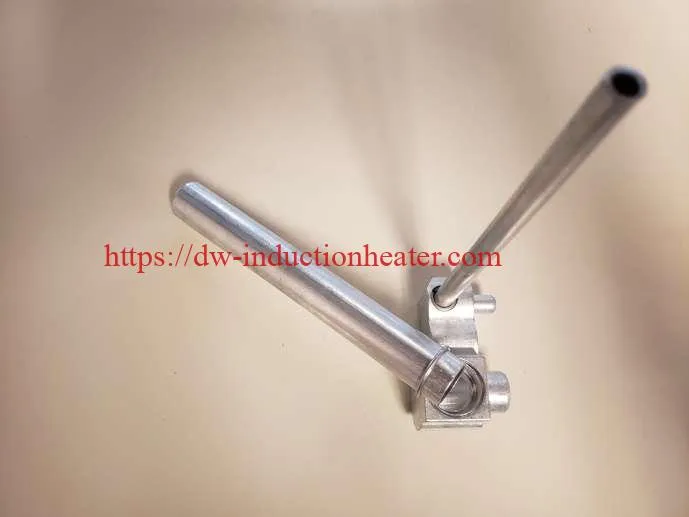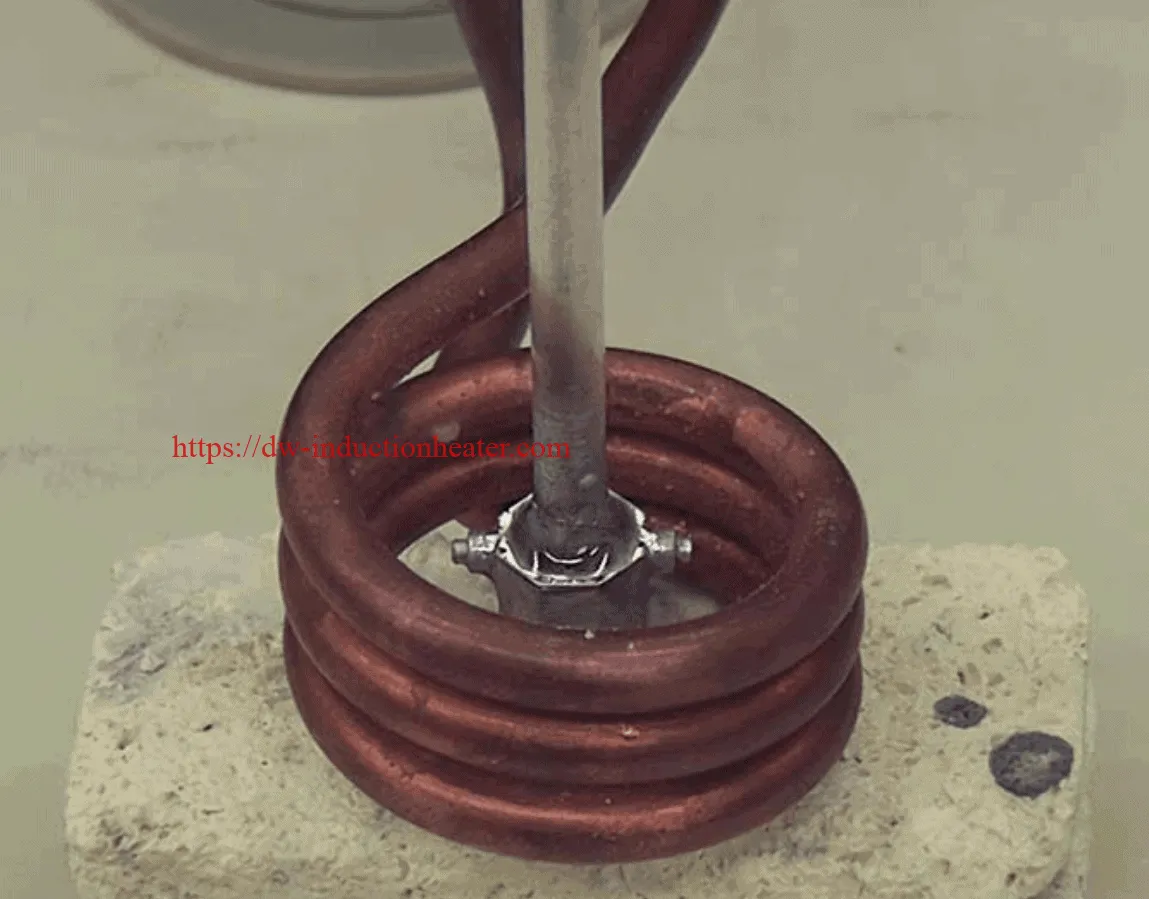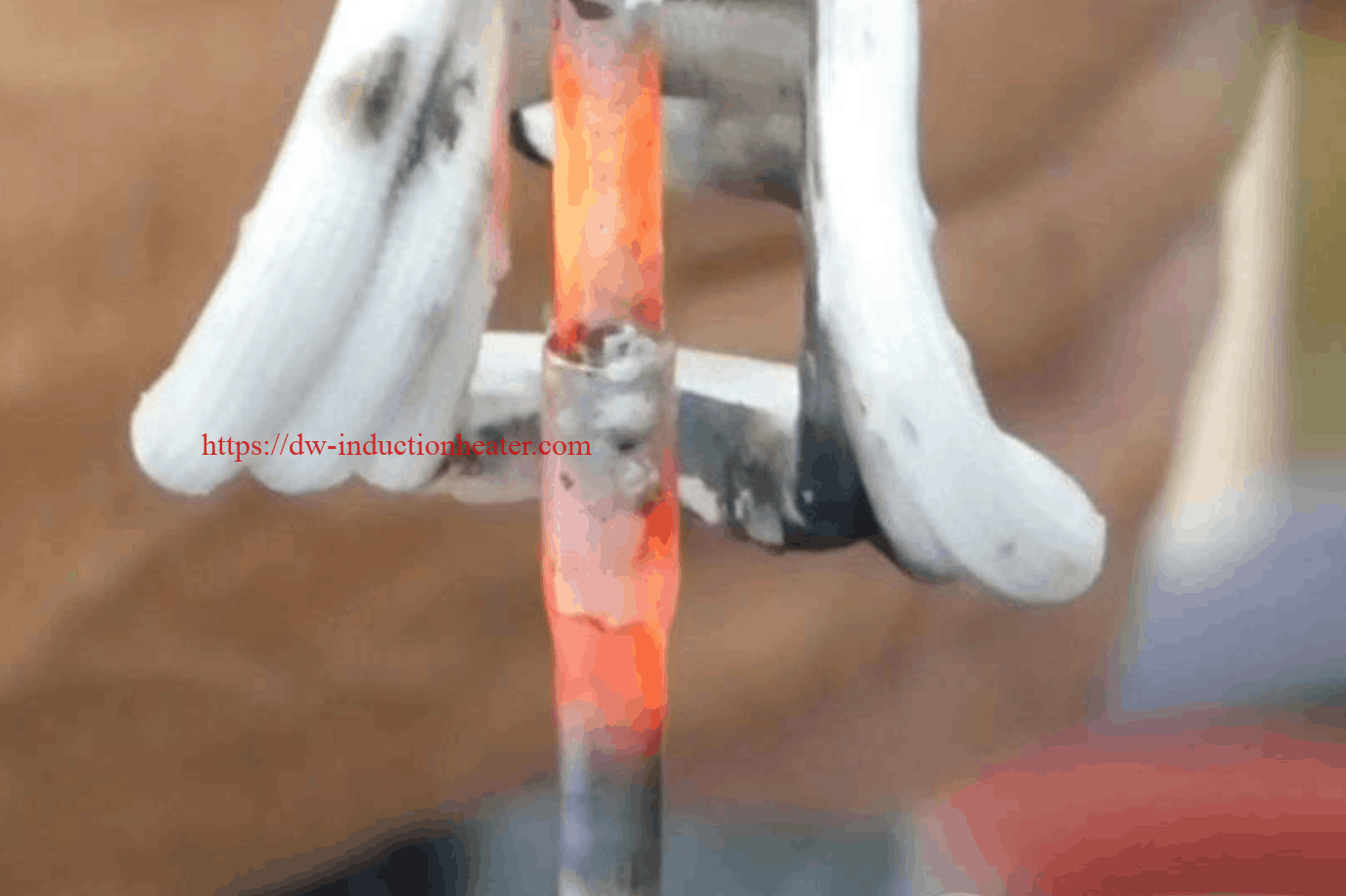Induction Brazing Aluminum Automotive
Objective: Heat aluminum for an automotive brazing application
Material: Aluminum tubing 0.50 (12.7mm) dia, an aluminum boss 1” (25.4mm) long, flux filled braze rings
Temperature: 1200 ºF (649 ºC)
Frequency: 370 kHz
Equipment • DW-UHF-10KW induction heating system, equipped with a remote workhead containing one 1.0μF capacitors for a total of 1.0 μF
• An induction heating coil designed and developed specifically for this application.
Process A multi turn pancake coil is used to heat the joint between the aluminum tubing and boss. The joint heats to temperature in 1.5 minutes and the braze ring melts forming a clean brazed
joint.
Results/Benefits Induction heating provides:
• Hands-free heating that involves minimal operator skill for manufacturing
• Flameless application
• Reliable, repeatable aesthetically pleasing braze joint
• Even distribution of heating




